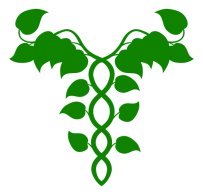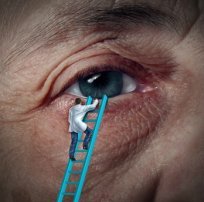Gene Therapy
a promising step in the treatment of wet AMD
. Gene therapy is safe in humans — new trial reveals
Every wet (neovascular or exudative) AMD starts with dry (atrophic) AMD, in which small deposits are formed on the retina, right below the macula, causing it to degrade over time. It progresses to wet AMD, where the abnormal growth of blood vessels causes damage and breakage of the macula. This results in rapid loss of vision. Wet AMD is the cause of 90% of all cases of severe loss of vision from age-related macular degeneration. And while there are treatments available for wet AMD, the results of a new trial reveals a safer and more effective alternative—gene therapy.
Wet Macular Degeneration — The Facts and the Popular Treatments
According to the World Health Organization (WHO),Wet macular degeneration is one of the leading causes of vision loss. The National Eye Institute estimates that the number of Americans affected by AMD will rise to 5.4 million by the year 2050. This figure is more than twice the figure for 2010 (2.07 million). Needless to say, wet AMD is a chronic eye disease, and calls for an effective, safer treatment.
How Does the Disease Progress?
Although wet AMD is less common, since it affects only 10%-15% of the people with dry AMD, it is more dangerous as it affects the central vision. A recent study has revealed that diets rich in fat trigger certain bacteria in the stomach which aggravate wet AMD.
The disease progresses like the overgrown roots of a tree which grow and spread until they crack through the sidewalk. When the oxygen supply is cut off due to deposits on the retina, the body responds by creating more blood vessels in the area to supply oxygen. These overgrown vessels are often quite weak, and the ruptures lead to scarring of the macula, causing it to lift from its base.
The trigger for the growth of these vessels is caused by a protein known as vascular endothelial growth factor (VEGF). It is helpful in cases where the body needs blood vessel growth (e.g., supplying vessels to the areas damaged by a heart attack) but when it supplies vessels to the eye, the result is wet AMD.
How Can Wet AMD Be Treated?
There are many treatments for wet AMD. One of the most popular treatments is to neutralize VEGF by using repeated eye injections. In this process, anesthesia is used to numb the affected eye (which has been dilated) and a device called speculum is used to keep your eye open for the injection. The injection is then given to the patient. For many, this recurring procedure is quite cumbersome and anxiety-inducing.
Gene Therapy — Is It Effective?
In gene therapy, a corrective gene is inserted once into the affected area to treat the abnormalities.
A clinical trial has shown that experimental gene therapy for wet AMD appears to be safe. The paper on this trial was published in The Lancet. In this clinical trial, a gene was inserted into the affected eyes of 19 men and women with wet AMD. This gene caused retinal cells to produce a protein (sFLT01) that bound to VEGF and discontinued the progression of unhealthy blood vessels. The vector used to deliver the gene is a disabled version of the virus (AAV2) that is used to treat common colds.
Observations revealed that the AAV2 antibodies present in the patients rendered the gene useless. Regardless of the ineffectiveness, the results of the clinical study revealed that patients can tolerate gene therapy and no side effects were found even in the highest dosages. This is a huge, positive step towards the search for a new treatment for wet AMD which does not involve repeated injections in the eye—something most patients abhor and try to avoid
.

















